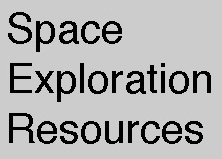
South Pole 10 m/pixel PSR Mosaic
Due to the axial tilt of the Moon (1.54°), some areas near the poles never see the Sun and are called Permanently Shadowed Regions (PSRs). While other nearby regions remain illuminated by the Sun for the majority of the year, the PSRs are illuminated only by light reflected from nearby illuminated massifs, crater walls, and other terrains.
Increased exposure times for PSR imaging (20x to 80x) leads to elongated pixels (10 m to 40 m by 1 m to 4 m) and reduced image resolution compared to typical Narrow Angle Camera (NAC) images [1]. The low light and signal in PSRs requires additional calibration steps. After dark subtraction and linearization, DN ≤ 10 do not contain signal and are set to special pixel values (Low Instrument Saturation; LIS) and a second linearization is performed mapping 10 < DN < 20 to 0 < DN < 20 consistent with laboratory calibration measurements [2]. The calibration pipeline is continued, and all images are calibrated to I/F [2]. The final step in the calibration is removing illuminated terrain from the images; I/F values (≥ 0.005) are considered illuminated and set to null leaving a patchy image of only areas in shadow.
The long exposure NAC images have around 80 pixels of elevated DN at the edge of the image causing striping in the mosaics. To reduce the appearance of striping, 92 (not summed) or 46 summed outside edge pixels are trimmed during calibration. The calibrated long exposure NAC images contain instrumental scattered light that often causes reflectance variation from image to image. Reflectance variation between images taken with similar illumination geometry is minimized with the USGS ISIS application BLEND prior to AUTOMOS [3], resulting in a more seamless mosaic.
NAC images are map projected at 10 m/pixel onto the LOLA polar digital terrain model (http://wms.lroc.asu.edu/lroc/view_rdr/WAC_GLD100) [4] using the LOLA crossover corrected ephemeris. The images were not controlled [5]. This 10 m/pixel PSR mosaic extends from 80° S to the pole with NAC images trimmed by a buffered shapefile extending a distance of 10 km beyond the PSR boundary. The PSR boundary shapefile and the buffered shapefile are derived from a LOLA data product which includes only regions in permanent shadow [6].
For the 8-bit stretched version of the mosaic, each PSR is stretched separately. Mosaic NULL values are set to 0 DN, LIS values are set to 1 DN, Low Representation Saturation (LRS) values are set to 2, 0 I/F is set to 3 (black), the 99th percentile and above of just the PSR is set to 254 (white), and High Instrument Saturation (HIS) values are set to 255. The PSR stretch is applied to the buffered mosaic, and a gamma stretch of 1.5 is applied. Each PSR mosaic is then stitched into the final mosaic. After these steps, the values are no longer in I/F, but instead have arbitrary units from 3 - 254. The final mosaic is a 8-bit product masked to the PSR boundary buffered to 10 km.
The companion shapefile is a digitization of south pole PSRs (larger than 5 square km) from images created by [6]. To identify PSRs, the horizon elevation was determined in several directions based on polar DTMs. For PSRs from 82° S to 90° S, the polar DTMs are 60 m/px. For PSRs from 81° S to 82° S, the polar DTMs are 120 m/px. For more information, refer to [6].
All of the images in the mosaic can also be found in the LROC PSR Atlas available at http://lroc.sese.asu.edu/psr and described in [7]. In addition, all images are archived as EDR and CDR products in the LROC PDS (https://wms.lroc.asu.edu/lroc/search).
When citing this product, use the following reference: Brown, H. M., Boyd, A.K., Cisneros, E., Sonke, A., Huft, A., Robinson, M. S. (2022). Lunar Reconnaissance Orbiter Camera Permanently Shadowed Region Images: Updates to PSR Atlas and PSR Mosaics. In Lunar Polar Volatiles Conference (2022), abstract #5033. https://www.hou.usra.edu/meetings/lunarpolar2022/pdf/5033.pdf
For more information on LROC Reduced Data Records (RDRs), please refer to the LROC RDR Software Interface Specification (SIS).

